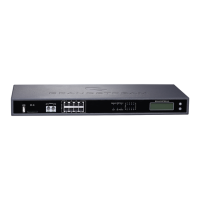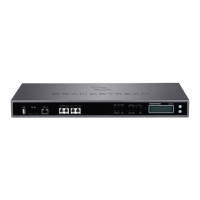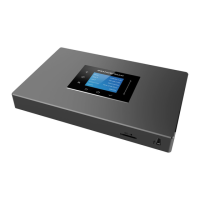Inbound Route: Import/Export Inbound Route
Users can now import and export inbound routes to quickly set up inbound routing on a UCM or to back up an
existing configuration. An exported inbound route configuration can be directly imported without needing any
manual modifications.
Figure 123: Import/Export Inbound Route
The imported file should be on CSV format and using UTF-8 encoding, the imported file should contain below
columns, and each column should be separated by a comma (It is recommended to use Notepad++ for the
imported file creation):
• Disable This Route: Yes/No.
• Pattern: Always prefixed with _
• CallerID Pattern: Always prefixed with _
• Prepend Trunk Name: Yes/No.
• Prepend User Defined Name Enable: Yes/No.
• Prepend User Defined Name: A string.
• Alert-info: None, Ring 1, Ring 2… User should enter an Alert-info string following the values we have in
the Inbound route Alert-Info list.
• Allowed to seamless transfer: [Extension_number]
• Inbound Multiple Mode: Yes/No.
• Default Destination: By DID, Extension, Voicemail… User should enter a Default Destination string
following the values we have in the Inbound route Default Destination list.
• Destination: An Extension number, Ring Group Extension…
• Default Time Condition.
• Mode 1: By DID, Extension, Voicemail… User should enter a Default Destination string following the
values we have in the mode 1 Default Destination list.
• Mode 1 Destination: An Extension number, Ring Group Extension…
• Mode 1 Time Condition.
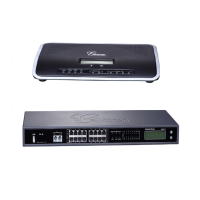
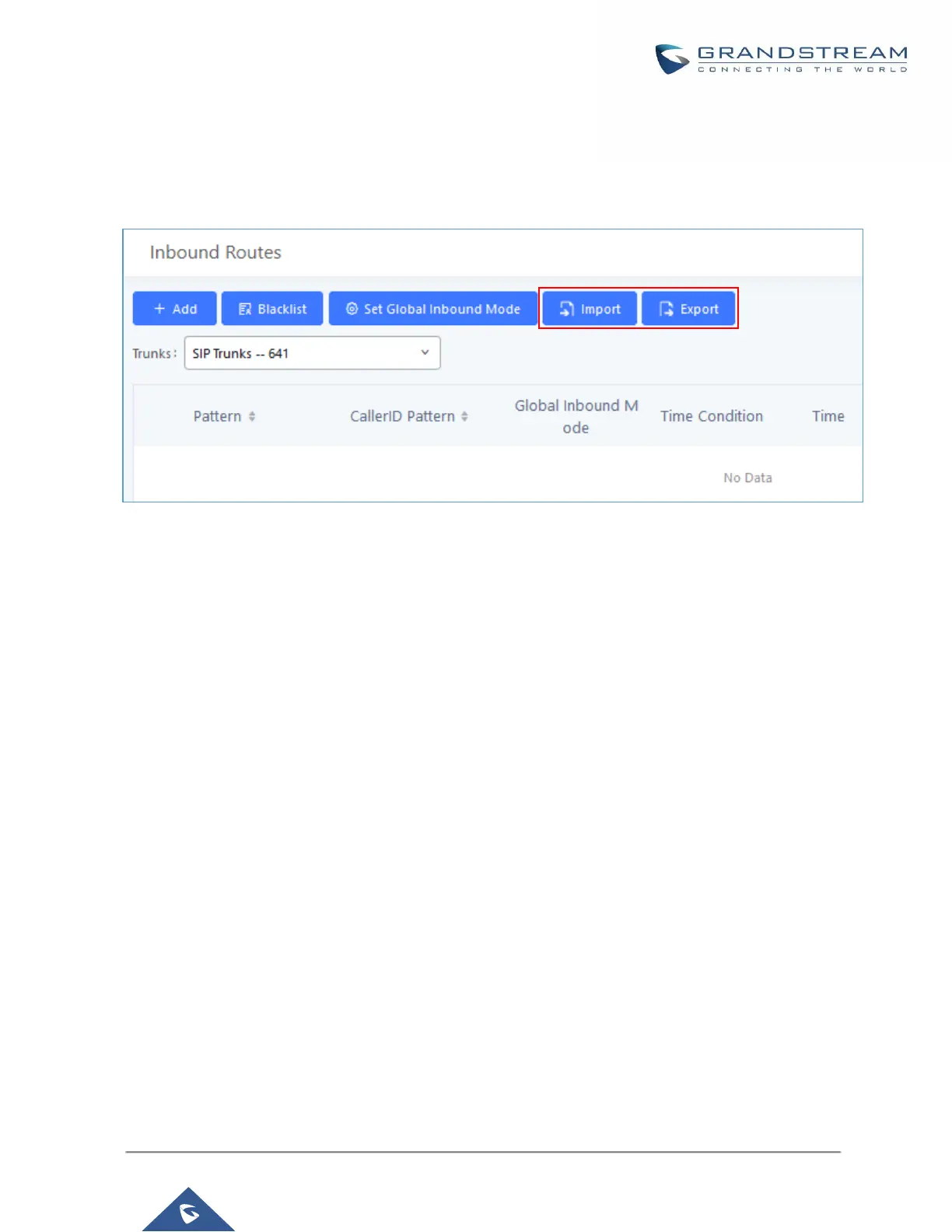